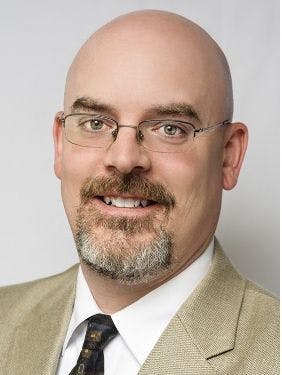
Mark Lerner, managing principal owner of the Washington Nationals, has been instrumentally involved with the Major League Baseball club since his family purchased it in 2006, working through every single high and low along the way. And that includes a tough cancer battle that two years ago required amputation of part of his left leg.
And even he admits to being awestruck by what’s now happening with the Nationals, having reached their first-ever World Series, and the flurry of mixed-use development mushrooming all around Nationals Park in southeast Washington, D.C.
“Every time I drive by, I can’t believe my own eyes,” Lerner says. “There’s nothing quite like it in the United States, maybe in the whole world.”
There may a bit of hyperbole there, a giddy rush of euphoria as the Nationals reach what is for them unprecedented competitive heights. But not much.
The site of Nationals Park was previously an undeveloped, crime-ridden wasteland of industrial lots, vacant parcels, and even some unpaved streets in the Navy Yard neighborhood of the US capital city. The throngs of tourists at Washington’s famous monuments and museums were geographically just a few miles to the northwest, but metaphorically a world away.
MLB commissioner Rob Manfred, who earlier in his career worked in Washington, a few years ago pointedly said that prior to the construction of the ballpark, “you wouldn’t have gone down there on a bet.” I previously spent 11 years of my own living and working in the Washington area, can heartily agree with Manfred’s sentiment, and like many Washingtonians, was largely unfamiliar with the once-blighted area before it became a candidate for a ballpark site.
But it was there that city leaders 15 years ago focused their bold gambit to Major League Baseball, then owners of the struggling Montreal Expos. The basic pitch to the league: move the Expos to Washington, and a new part of the city will redevelop around a new ballpark. In turn, MLB would then tap into a fast-growing capital region and garner a hefty financial return on their investment in a franchise that had essentially fallen into receivership.
Washington, however, was battling its own deeply troubled history with baseball. The first version of the Washington Senators left after the 1960 season to become the Minnesota Twins. And then a second version of the Senators left 11 years later and were rechristened the Texas Rangers just outside of Dallas, beginning Washington’s 33-year baseball void.
“We started this whole thing with two big strikes against us,” says Mark Tuohey, who as the chairman of the DC Sports & Entertainment Commission 15 years ago played a key role in negotiating a relocation and stadium deal with MLB to create the Nationals. “Nobody else has lost a baseball team like that twice and then gotten a third. So we had to prove to MLB that we were a very different Washington than what existed for those Senators teams.”
The Washington metropolitan area has tripled from about two million people in 1960 to more than six million now.
What also helped ease MLB’s skepticism was Washington’s willingness to fund the development of what would be Nationals Park entirely with public dollars, an outlay that will ultimately surpass $1bn when including interest costs, at precisely a time when US appetites for public-sector sports investments were sharply eroding. But the city developed a structure where the bonds would be funded by several tax and revenue streams that would not touch residences and not exist but for the new ballpark.
Nationals Park would ultimately open in 2008 after the club spent a three-season interim period at Washington’s aged RFK Stadium. For a while, it looked like the whole Expos relocation plan might fizzle into disappointment. The Nationals lost at least 100 games in each of the first two seasons in the new ballpark, and 93 more in the third. And a deep national recession made commercial development around the ballpark slow to develop.
But over the past seven years, all that has changed in stunning fashion. The Nationals have reached the playoffs five times, and that formerly downtrodden neighborhood is now teeming with activity, with new restaurants, bars, offices, and residences stretching more than a dozen blocks in nearly every direction. Audi Field, home of Major League Soccer’s DC United, joined Nationals Park in the neighborhood in 2018.
The overall value of residential and commercial property in the ballpark neighborhood has more than doubled since 2008, to beyond $2.65bn, with numerous additional projects still under construction and Lerner’s family-led real estate company playing a prominent role in that activity. More than 10,000 apartment units have been built in the area, with another 10,000 to come over the next half decade or so.
Tax revenue to support the public construction of Nationals Park has been so robust, it’s now projected those 30-year stadium bonds will be paid off more than a decade early.
It’s here where Tuohey takes aim at many sports economists who have argued publicly funded sports facilities simply recirculate economic activity already occurring in a region.
“The stadium has been such a strong catalyst in opening up this whole area of the city, not dissimilar to what [Capital One Arena] did in Chinatown, and the region overall continues to grow and thrive,” Tuohey says. “It’s absolutely been a net add.”
And beyond mere dollars and the constant presence of construction derricks, the ballpark neighborhood has also rapidly become one of Washington’s hip locales.
“I’m not sure anybody knew how cool this area was going to become,” says Ryan Zimmerman, Nationals’ first baseman and the club’s longest-tenured player at 15 seasons. “We’ve all sort of grown up together, and people here sort of had to learn how to be Washington baseball fans again. But they did, and what’s happening there now is incredible.”